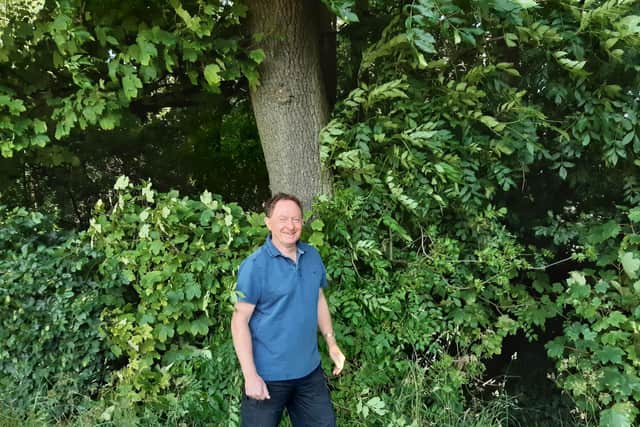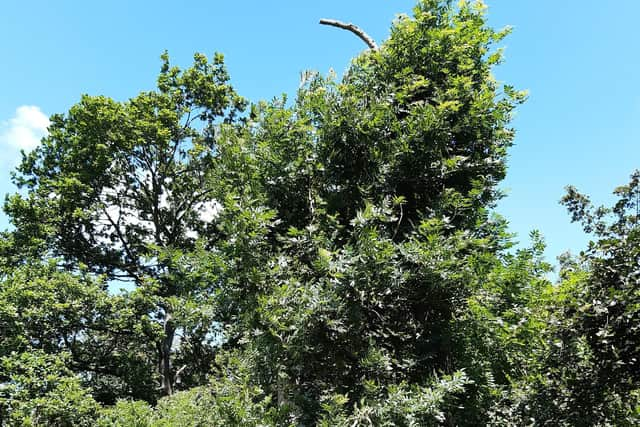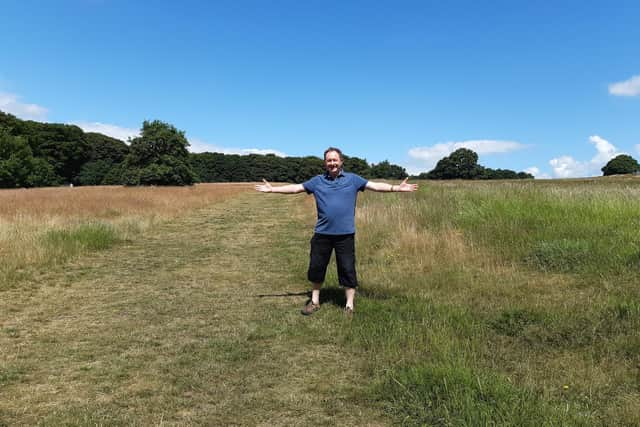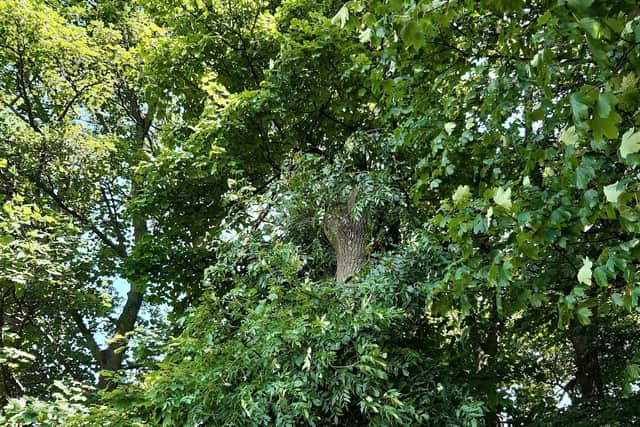Sheffield ecologist challenges plan to deal with killer tree disease that will cost council millions
and live on Freeview channel 276
Ian Rotherham, emeritus professor at Hallam University, is an authority on trees and woodland habitats. He said that government policy to deal with ash dieback and other tree diseases is simply not working and many trees thought to be infected may instead be suffering from environmental stress.
He pointed to ash trees in Graves Park, where he is working on a new project, that have been topped to deal with the disease but have continued to grow vigorously afterwards. He said this is supposed to be impossible with ash dieback, which is considered fatal to trees.
Advertisement
Hide AdAdvertisement
Hide AdThe researcher, writer and environmental campaigner said that wildlife organisations also have to spend huge sums on actions including felling trees under orders from government department DEFRA.


If a statutory notice is served saying a tree has ash dieback, landowners must act quickly, especially when there is a potential danger to the public. A recent meeting of Sheffield City Council’s communities, parks and leisure policy committee heard that the cost of dealing with this will be £320,000 this year, rising to an estimated £1,200,000 by 2029-30.
Other diseases hitting species such as larch will add to that cost, councillors were warned.
Cutbacks
The council has to use specialist contractors to do the work, at an average cost of £400 a tree, the committee heard, because cutbacks mean it no longer has council staff who could do the work.
Advertisement
Hide AdAdvertisement
Hide Ad

Ian also worries that this work is doing irreparable damage to ancient woodland landscapes and archaeology, which will then be lost.
He said: “I think the first thing is that there is no discussion, there’s no effective assessments, and so when it’s been decided to take on operations on sites, often ancient woodland sites, there’s been no site evaluation, there’s no mitigation in terms of heritage or archaeology or ecology.
“There’s no evidence that the strategy that’s being in place at the moment and forced on the local authority by DEFRA and by the Forestry Commission actually works. There’s no evidence that it’s a long-term solution and there will be ash dieback, there will be phytopthera, there’ll be other diseases coming along, and each of these is going to cost millions of pounds.


“We don’t have the budget so we need a plan B. It doesn’t work and the reason these trees are suffering is because of environmental stress, drought, amazingly high temperatures, and that is going to get worse, so you’re going to see more and more trees suffering problems and decline.
Advertisement
Hide AdAdvertisement
Hide Ad“But we’ve seen today ash trees which were topped, at great expense and cost to the environment, but are now growing absolutely amazingly well. They are not diseased – if they were diseased they would have died, you’ve only got to go online and look at what the symptoms of these diseases are, and it says ‘oh it’s fatal, it’s irrecoverable, blah blah blah blah’.
“Well, these trees are growing faster than they probably did before they were topped, so we spent all that money and the trees were not diseased, they were stressed, so that’s one of the first things.”
Chainsaws


He continued: “If we go down the route that yes we have to intervene, we have to take out and kill the ash trees or the larch or the other diseased trees, then I think the sensible answer is to do it on site by hand with a few operatives with chainsaws, and to leave the dead trees standing up or in situ.
“That radically drops the cost and it reduces the damage, the damage which is being done in some cases around the region, and will be done again this autumn in Wyming Brook, is destroying ancient woodlands.
Advertisement
Hide AdAdvertisement
Hide Ad“It’s turning ancient woodlands into post-industrial landscapes and they are no longer proper ancient woodlands, so we’re paying a huge amount of money unnecessarily to do a job that doesn’t work and causes a massive amount of damage.”
Ian is currently working on a project based in Graves Park that began in March which will be officially launched today (Wednesday, June 28). Run by South Yorkshire Biodiversity Research Group, it involves local people in adapting green spaces near them to the challenges of changing climate and biodiversity extinction.
The Adapting to Climate Change project is doing this through running workshops, field events, holding discussions with key stakeholders and decision-makers, running surveys and gathering information. This will ultimately lead to a management plan for Graves Park.
These activities will run in parallel with a Lottery-funded project called Digging Deeper that will investigate history, heritage and archaeology in the park. The findings from Digging Deeper will help to inform the plan.
Meadowland
One of the first parts of the project already under way has involved creating meadowland areas in the park, which capture carbon as well as attracting lots of insects and other flora and fauna. Ian explained that the longer grass also helps to slow down rainfall, letting more water sink into the ground and allowing flood water to head more slowly to the stream.
Advertisement
Hide AdAdvertisement
Hide AdSome beech trees will cleared in areas including near the ravine. This will help to allow more light in to the ground level in order to stimulate lower-level plant growth. Trees will be left in place and laid down to help encourage insects and add to flood control measures.
Other issues in the park include soil erosion.
The park has been chosen, said Ian, because it is a large enough area to make a difference and there are problems to be tackled around the Cold Stream and Cobnar Ravine.
It has good community involvement and is seen “as a major green hub with green corridors as tentacles spreading in every direction”. Ian said that the project could act as a “green octopus” to spread those tentacles by showing what can be achieved.
To find out more about upcoming events, go to https://www.ukeconet.org/graves-park-climate-resilience-2023.html